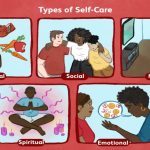Fitness is more than just a physical endeavor; it’s a holistic journey that encompasses mental well-being, emotional balance, and spiritual vitality. In a world where sedentary lifestyles and stressors abound, the pursuit of fitness goes beyond mere aesthetics, focusing on overall health and vitality. This article explores the multifaceted aspects of fitness, from physical exercise to mental resilience, and how it contributes to a balanced and fulfilling life.
1. Physical Fitness: The Foundation:
At its core, fitness often starts with physical well-being. Engaging in regular exercise is a cornerstone of a healthy lifestyle. Whether it’s cardiovascular activities like running or cycling, strength training, or flexibility exercises like yoga, physical fitness is essential for maintaining a strong and resilient body.
Exercise not only helps in weight management and muscle development but also contributes to cardiovascular health, improved metabolism, and enhanced immune function. Beyond the physical benefits, engaging in regular physical activity releases endorphins—often referred to as “feel-good” hormones—contributing to an improved mood and reduced stress levels.
2. Mental Fitness: Nourishing the Mind:
The link between physical and mental fitness is undeniable. Regular exercise has been shown to have a positive impact on mental health by reducing symptoms of anxiety and depression. Beyond the physiological effects, engaging in physical activities can provide a mental escape, offering a respite from the demands of daily life and creating a sense of accomplishment.
Mindfulness practices, such as meditation and deep breathing exercises, also play a crucial role in mental fitness. These practices cultivate a heightened sense of awareness, promoting mental clarity, stress reduction, and emotional resilience. The mind-body connection is a powerful aspect of overall well-being, and mental fitness is an integral part of the holistic fitness journey.
3. Emotional Resilience: The Heart of Well-Being:
Emotional fitness is about cultivating resilience and adaptability in the face of life’s challenges. It involves developing a healthy relationship with one’s emotions, understanding their impact, and building coping mechanisms for navigating both the highs and lows of life.
Physical activities that engage both the body and mind, such as dance or group fitness classes, can contribute to emotional well-being by fostering a sense of community and connection. Additionally, practices like journaling or engaging in creative pursuits provide outlets for emotional expression, contributing to a more balanced and resilient emotional state.
4. Nutritional Fitness: Fueling the Body and Mind:
Fitness is not solely about what happens during a workout; it’s also about what goes into the body. Nutritional fitness involves making informed choices about food to fuel the body and mind optimally. A well-balanced diet that includes a variety of nutrients is essential for supporting energy levels, recovery, and overall health.
Hydration is a crucial component of nutritional fitness. Staying adequately hydrated is vital for physical performance, cognitive function, and maintaining overall health. The right balance of macronutrients (carbohydrates, proteins, and fats) and micronutrients (vitamins and minerals) supports the body’s various functions and contributes to overall well-being.
5. Holistic Fitness: Integrating Mind, Body, and Soul:
Holistic fitness recognizes that the mind, body, and soul are interconnected, and true well-being involves nurturing all these aspects. Integrative practices, such as tai chi or Pilates, focus on the alignment of mind and body, fostering balance, flexibility, and a sense of inner peace.
For some, spirituality is an integral part of the fitness journey. Engaging in activities that connect the individual with their sense of purpose, whether through nature walks, meditation, or religious practices, contributes to a deeper sense of fulfillment and well-being.
6. Social Fitness: Building Connections:
Humans are social beings, and social connections play a crucial role in overall health. Social fitness involves building and maintaining positive relationships, fostering a sense of community, and providing support networks. Group fitness classes, sports teams, or workout buddies contribute not only to physical fitness but also to a sense of belonging and camaraderie.
Social interactions are vital for mental and emotional well-being. Engaging in activities with others not only provides motivation but also creates a supportive environment where individuals can share their fitness journeys, challenges, and successes.
7. The Evolution of Fitness Technology:
In the digital age, technology has become an integral part of the fitness landscape. Fitness apps, wearable devices, and online platforms provide tools for tracking progress, accessing workout routines, and connecting with virtual fitness communities. Technology has made fitness more accessible and personalized, allowing individuals to tailor their fitness routines to their specific goals and preferences.
Conclusion:
Fitness, in its truest sense, is a journey that extends far beyond the confines of a gym or a workout routine. It is a holistic approach to well-being that encompasses physical health, mental resilience, emotional balance, and spiritual vitality. The pursuit of fitness is not about conforming to societal standards but about cultivating a lifestyle that nourishes the mind, body, and soul.
In a world where the demands of modern life can be overwhelming, embracing a holistic fitness journey becomes a source of strength and resilience. Whether through physical exercise, mindfulness practices, nutritional choices, or social connections, each aspect contributes to a balanced and fulfilling life. The evolving landscape of fitness continues to offer new opportunities for individuals to embark on a journey of self-discovery, empowerment, and holistic well-being.





